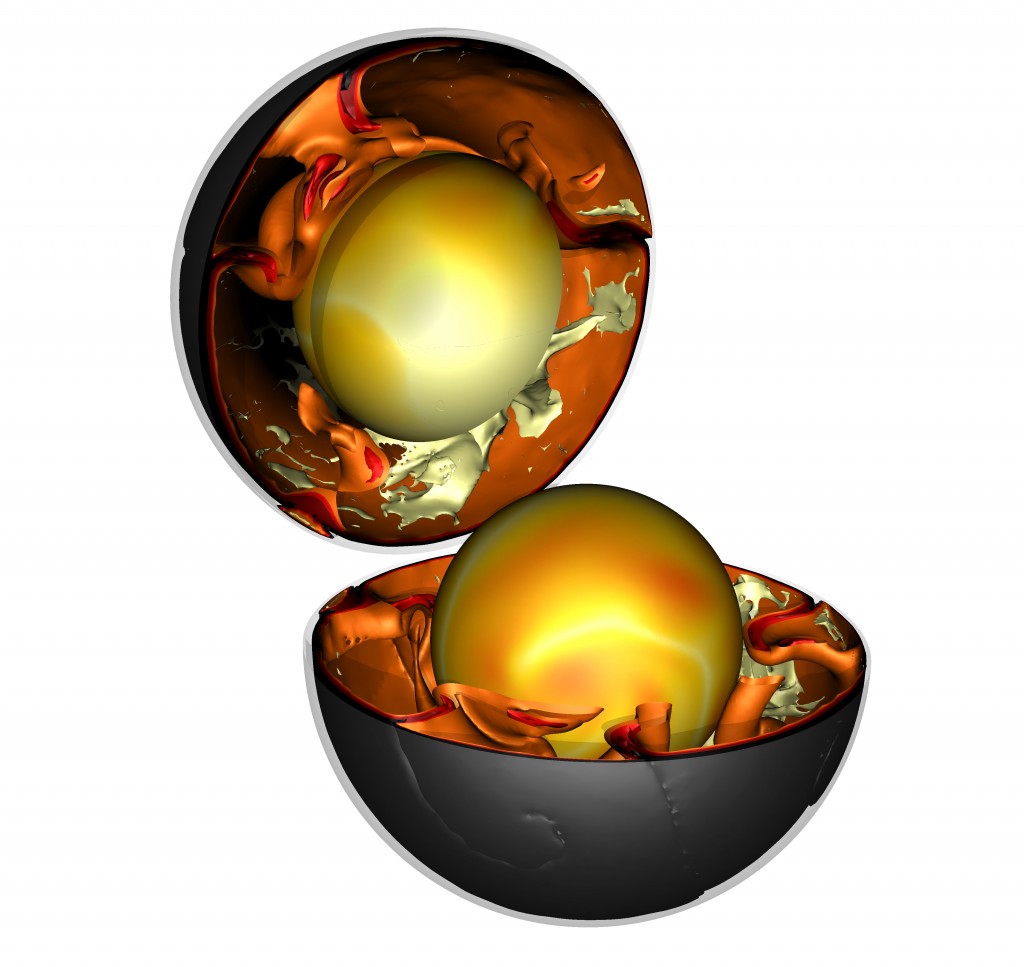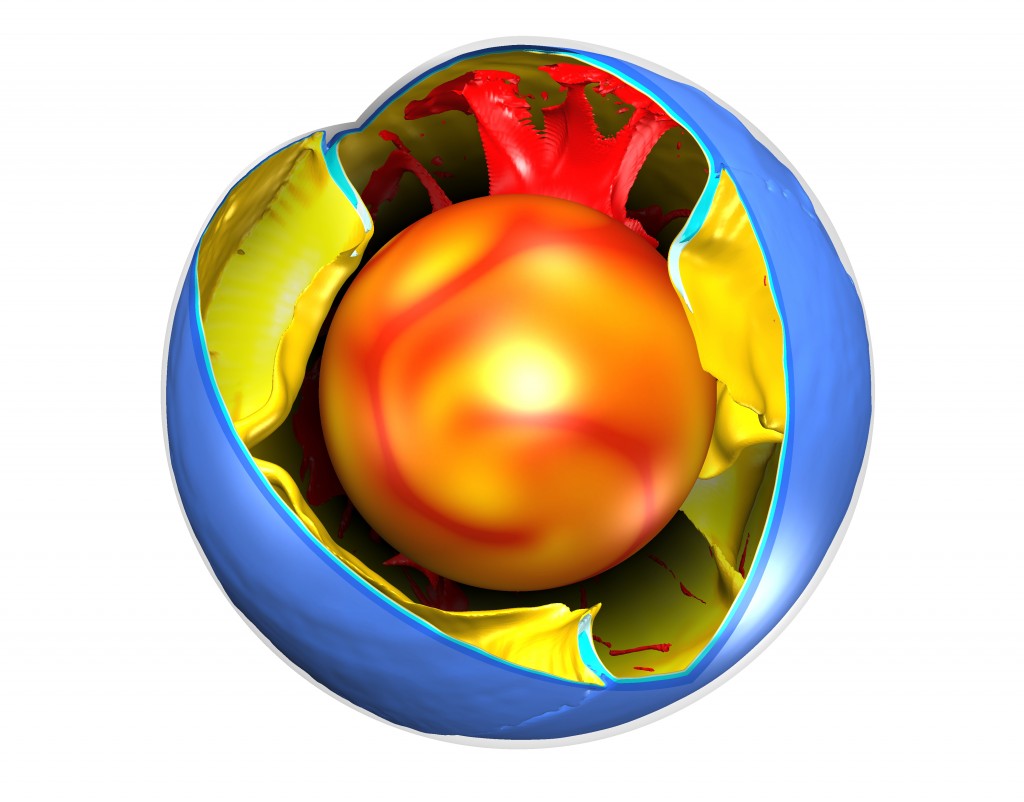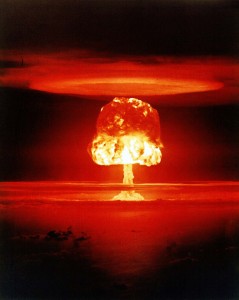Look in a bookshop and see how many shelves are taken up with murder mysteries. There’s little that is as compelling as the idea of a dead body on the ground and a search to find the culprit. I’m going to try out the genre here today. I can promise you the deaths of entire species, a glamorous prime suspect with spectacular methods and an overlooked serial killer who has poisoned many different victims. I can’t promise you detectives who are troubled mavericks who break the rules, but there are geologists who sometimes feel like they are underdogs.
The dinosaurs were killed by a giant impact. There’s little debate in the public mind about that and the role of extraterrestrial impacts on earth’s history is now inarguable (I’ve written about it myself). Sometimes though it irritates me how much focus is put on speculation about extra-terrestrial causes for mass extinctions. The worst example I’ve seen is speculation that dark matter (that we don’t understand) has caused past extinctions. Glamorous ideas about Death From Space, which (with the exception of the Cretaceous-Palaeogene) event have little supporting geological evidence always seem to get attention.
This makes me grumpy because geologists have a perfectly good explanation already. A serial killer stalks earth’s history. It doesn’t kill by flaming impact (or however dark matter is meant to work) but by poisoning, choking the life out of countless plants and animals. Death From Above is spectacular but Death From Below, a murderous force rising slowly and unstoppably from the Earth’s core is much creepier.
Forensic evidence
Mass extinctions leave an unusual sort of murder scene. Instead of there being a single dead body, there is a sudden lack of them, as fossils of particular species disappear from the geological record. For a normal murder, you would study the body for any clues, any evidence of what killed it. Same with a mass extinction, only you look in the layers of rock round about where the fossils run out.
These need to be places with a continuous sedimentary record, where we have sediments from the age of the extinction. Often these are marine sediments, which can contain relatively large volumes of small fossils. Chemistry is the best form of forensic evidence as it gives us an insight into the state of the ocean over time. Carbon isotopes track the ebb and flow of the Carbon cycle and often the extinction horizon is associated with a sudden change in them. This means that rocks from the time of the extinction event can be found even in layers with few fossils.
The K-Pg event (RIP non-avian dinosaurs, plesiosaurs, ammonites), is famously associated with a layer rich in Iridium, an element rare on the earth’s surface but much more common in material in space. Similar connections are found between other extinctions and Zinc. The P-Tr event (RIP trilobites, nearly everything else) shows a spike of Zinc in marine sediments immediately before the extinction. A recent study (Liu et. al 2017) also shows how the isotopes of Zinc change over time. Zinc is an important nutrient for marine phytoplanktons, meaning their growth changes the isotopic ratio of Zinc in marine sediments. Using this they demonstrate not only that more Zinc is found, but that it came from volcanic or igneous material entering the ocean. This happened abruptly around 35 thousand years before the extinction event. Soon after, the ratio shifts back in a way consistent with phytoplankton activity returning to normal within 360 thousand years.
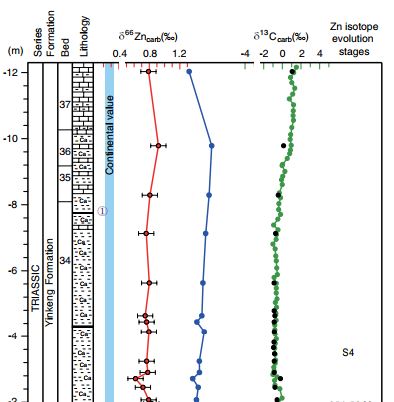
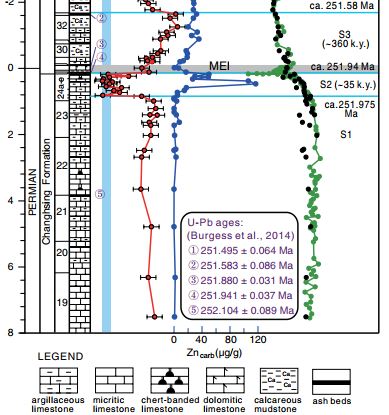 Figure 2b from Liu et al. Showing changes in Zinc concentrations and isotopic ratios immediately before the Carbon isotope changes associated with the extinction event.
Figure 2b from Liu et al. Showing changes in Zinc concentrations and isotopic ratios immediately before the Carbon isotope changes associated with the extinction event.
Other studies show anomalous peaks of Nickel abundance just before the P-Tr event in many sections across the world. Once again the source is inferred to be volcanic activity. Different sets of forensic evidence point to an obvious suspect – the Siberian Traps – an enormous area of volcanic rocks covering a huge area of Russia that was formed across the P-Tr boundary.
The Murder weapon
Volcanic eruptions are dangerous to be near. It’s obvious why life suddenly swamped by lava will not survive, but a mass extinction is a global phenomena. How can a volcanic area kill animals or plants on the other side of the world?

Figure 1 from Jerram et al. showing extent of Siberian Traps, highlighting sill intrusions, coal and explosion pipes.
One clue comes from odd structures found around the Siberian Traps, for example within the Tunguska Basin1. These structures are pipes called diatremes, formed by gaseous explosions.
Some diatremes are formed by gas ready mixed within the magma, but with these Siberian pipes the gas came from heating of the sedimentary rocks that were already there. Buried below the many lava flows, are flat sheets of rock called sills that pushed between existing sedimentary layers. These sills heat up the surrounding rocks, which in the Tunguska basin include much coal and evaporite rocks. This heating produced vast volumes of CO2 and CH4 that poured out of the pipes into the atmosphere.
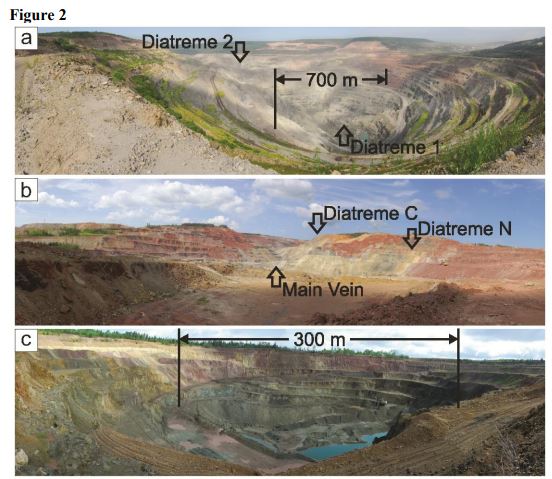
Figure 2 from Polozov et al. Showing portions of basaltic pipes, exposed within mining works.
These gases of course affect the climate. A huge outpouring of CO2 and methane, plus also nasty gases such as SO2 represent a pretty convincing murder weapon. A brand new paper demonstrates malformed parts of terrestrial plants about this time, attributed to pollution. Sudden ocean acidification and climate change followed by a collapse in planktonic growth leading to the the death of the dependent food webs is a uncontroversial story. It may be a story we are beginning to retell as gas forms mysterious holes in the ground in Siberia once more.
Killed and killed and will kill again
The Siberian Traps are just one of many Large Igneous Provinces (LIPs). Other ones are also associated with extinctions. The pleasingly named CAMP province, found in Atlantic facing areas of Africa, Europe and the Americas, overlaps in time with end-Triassic mass extinction event (RIP conodonts and various reptiles & amphibians). An open-access paper from mid 2017 demonstrates a link between sills intruding into organic-rich sediments and the extinction event – exactly as proposed for the P-Tr event.

Figure 1 from Davies et al
The bodies are piling up. The Late Ordovician extinction event (RIP 85% marine species, no big groups) has been linked to Mercury enrichment in marine sediments. The authors link this to a LIP, even though one of this age has not yet been found.
What do we know about this serial killer? LIPs are thought to be formed by huge plumes of rock, rising from the edges of odd features on the very floor of the mantle. Their ability to kill may depend on the nature of the crust they rise into. Both the P-Tr and Tr-J events see sills intruded into sediments. The Deccan Traps, active across the extinction of the dinosaurs (K-Pg) rose through basement rocks, so there were no sediments to heat, meaning they pumped out only volcanic gases. Maybe this is why the extinction event required an impact to finish the job.
Case for the prosecution
“So, ladies and gentlemen of the jury, I suggest to you that the accused is a serial killer. The mighty plesiosaur, the ever-busy scuttling trilobite, even the wriggly conodont, all were killed by the monster sitting before you. It killed, not by showy eruptions and square miles of lava, but by the silent injection of sheets of magma deep underground. This devilish act then poured huge quantities of poison into the air, bringing the very earth to its knees.”
We’re not quite ready for a trial. Some of the evidence is circumstantial and we certainly don’t have a full roster of victims. But LIPs should be high on the list of anyone’s list of suspects for the greatest murders the world has ever seen.


